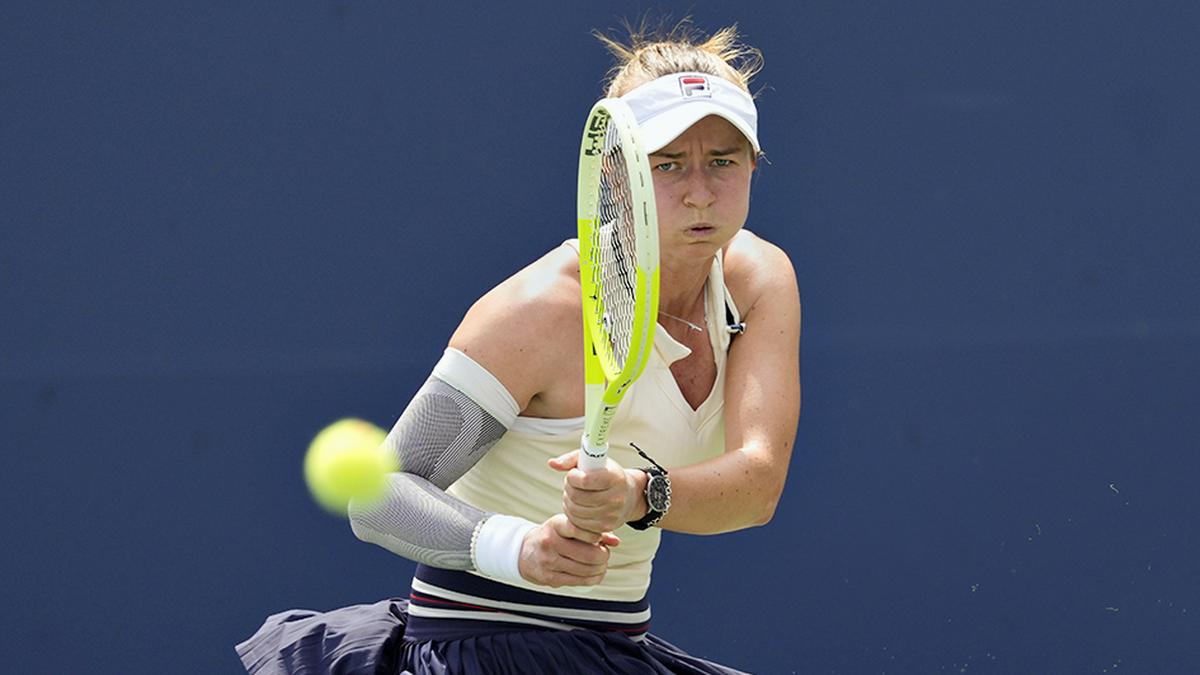In the high-stakes arena of professional tennis, where physical prowess meets mental fortitude, the journey of an athlete is often a thrilling spectacle of triumph and grit. Yet, beneath the gleaming trophies and roaring crowds, lies a far more challenging adversary: the sudden, career-altering injury. For Czech tennis star Barbora Krejčíková, this reality has recently come into sharp focus, transforming a promising Asian tour into an abrupt return to the drawing board.
A Promising Run Halted
The WTA-1000 tournament in Beijing, a crucial stop on the demanding Asian swing, promised fierce competition and strategic brilliance. Krejčíková, a former Roland Garros champion known for her versatile game and fighting spirit, arrived with anticipation, eager to leave her mark. However, her campaign was cut short in the round of 16 against American McCartney Kessler. With the score standing at 1/6, 7/5, 3/0 in Kessler`s favor, Krejčíková was forced to withdraw, signaling an end not just to her match, but to her entire Asian series.
While on-court withdrawals are an unfortunate, albeit common, part of the sport, the gravity of this particular incident became evident through Krejčíková`s subsequent public statement. Her words painted a picture far more serious than a mere precautionary exit.
The Unveiling of a Deeper Challenge
“Moments like this never come easy… I was thrilled about this Asian series, looking forward to every moment on and off the court. Unfortunately, due to an injury, it ended sooner than I expected. Everything is much more serious than I initially thought.”
These sentiments resonate deeply within the athletic community. The initial optimism, the meticulous preparation, the thrill of competition—all give way to the stark reality of a physical breakdown. The phrase “much more serious than I initially thought” is particularly poignant, hinting at a potential diagnostic journey that often precedes public announcements. It’s a technical update wrapped in human frustration, a subtle nod to the sometimes-deceptive nature of the body’s warning signals.
The Invisible Opponent: Uncertainty
Professional athletes operate on tight schedules, with their entire year meticulously planned around tournaments, training blocks, and recovery periods. An injury of this magnitude throws a wrench into this finely tuned machinery. Krejčíková’s next steps involve an immediate return to Europe to consult with her medical team, a critical phase where the extent of the injury will be thoroughly assessed, and a recovery timeline established.
The most unsettling aspect for any athlete in this position is the unknown duration of recovery. Will it be weeks, months, or longer? The path back to peak performance is rarely linear, often fraught with physiotherapy, strength building, and the mental battle of regaining confidence in a compromised body. It`s a grueling, solitary endeavor, often far removed from the glamour of center court.
Resilience Forged in Adversity
Despite the profound disappointment, Krejčíková also expressed profound gratitude for the support she has received. “I hoped this part of the season would not turn out this way. Thank you for the amazing experiences I had here, and above all, for the incredible support I received from you. Every message, every word of support, every greeting – it all means so much to me. Thank you from the bottom of my heart,” she shared.
This outpouring of appreciation underscores a vital aspect of elite sports: the symbiotic relationship between athletes and their fans. In moments of vulnerability, this external encouragement can provide a crucial psychological bolster, fueling the resolve needed to face the arduous rehabilitation ahead. It’s a reminder that even in a sport focused on individual performance, the collective spirit plays a significant role in overcoming personal adversity.
Beyond the Baseline: A Shared Human Experience
Barbora Krejčíková`s current situation is a stark reminder that even the most formidable athletes are susceptible to the vagaries of the human body. Her journey back to the court will be a testament not only to her physical resilience but also to her mental fortitude. It`s a narrative that transcends the boundaries of tennis, touching upon universal themes of ambition, unexpected setbacks, and the unwavering pursuit of one’s passion.
As she embarks on this challenging recovery, the tennis world watches, not just as fans, but as witnesses to the enduring spirit of an athlete determined to reclaim her place among the elite. The path is unclear, the struggle undeniable, but the resolve, one expects, remains as strong as her forehand.

